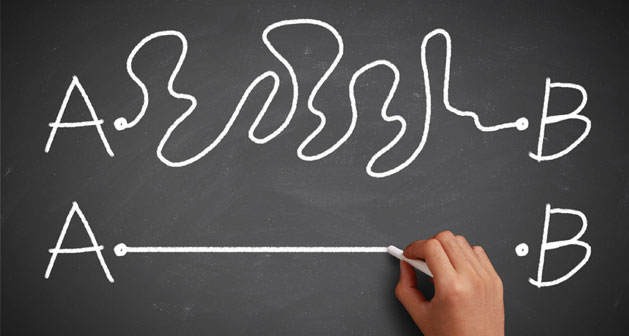
Create activities that resonate with students on a personal level.

So many times I find that the small tweaks in life make the biggest difference. One of my recent tweaks is the addition of the acronym KISSM to all of my presentations. Everyone remembers the meaning behind the first part of the acronym: Keep It Super Simple. But it is the addition of the M – Meaningful – that has really breathed fire and passion into my recent conversations.
We can keep things simple, but if they do not resonate on a personal level with your students AND with you as the instructional leader, the learning will not be as powerful. My preschooler enjoys using Pixie, so we worked together to create a “Letter I” project for his letter of the week. My son created a picture of an island, and I helped him type (well, peck) a sentence about it.
As we were working, he asked me what the button for webcam did. When I told him how it worked, he wanted his entire family to be a part of his island! Once we added our pictures, the project took on a different, more personal meaning for him.
Capturing their images to inject students into their projects is an easy way to help them make connections to content and make projects even more meaningful. I often work with teachers to use the Chroma Key feature in Frames to visually transport students into their projects. Your local weather person reports from a TV studio, yet appears “live and on the scene” thanks to a superimposed image of another location behind them. Transfer that scenario into your classroom, where your students are learning about historical figures and places, or telling a digital story in first person, and imagine the possibilities!

Candice Dunfee, a teacher in Tucson, Arizona, used this concept to create a virtual wax museum. She went to her supply room, tore off a few strips of blue butcher paper, and taped them to the wall. Then she took pictures of her third-grade students for their wax museum projects. The students, dressed up as Leonardo de Vinci, Laura Ingalls Wilder, and Queen Elizabeth, used Frames to tell their stories.
If we really want to make student work meaningful, we need to ask them to create valuable projects and share their learning artifacts outside of the classroom. This can range from printing work and posting it to a communal art gallery to posting student stories as podcasts on a district website. Students work harder when asked to create work that will be seen (and critiqued) beyond the walls of their classroom.
I have had the pleasure of viewing interactive treasure chests of learning and imagination that have been shared with me via email or on a teacher’s webpage. Recently, I received student work in a slightly different form – a PDF digital portfolio created with Share. Students had linked to writing documents and movies they had created and then added voice and text reflections. I loved how I could read, see, and hear that these students had taken ownership of their learning!
The next time you hear you need to do more with less in these trying economic times, go ahead and KISSM – keep it super simple and meaningful!

Follow us on Instagram for daily inspiration

Create a thought web, cluster, flowchart, or other graphic organizer for a lesson
8 first projects to get students using technology
Creative, digital book reviews
Fun and powerful ideas with animated characters

Wixie
Share your ideas, imagination, and understanding through writing, art, voice, and video.

Rubric Maker
Create custom rubrics for your classroom.

Pics4Learning
A curated, copyright-friendly image library that is safe and free for education.

Wriddle
Write, record, and illustrate a sentence.

Get creative classroom ideas delivered straight to your inbox once a month.
Topics